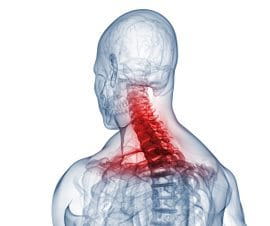About
Neck pain is a common problem. Quite often it is associated with a lack or underuse of neck muscles. Stress and/or a physically repetitive or static work situation can also damage the neck.

Even athletes can suffer from neck pain, due to weak muscles, as upper thoracic training is not neck training. These muscles need to be addressed specifically.
Neck pain – what are the most common symptoms?







